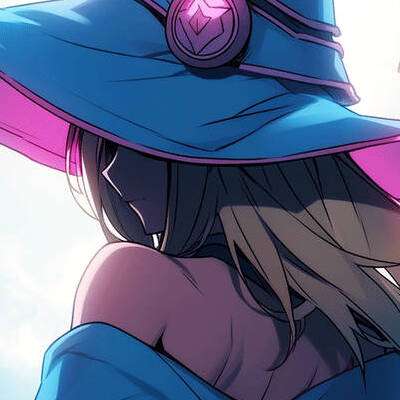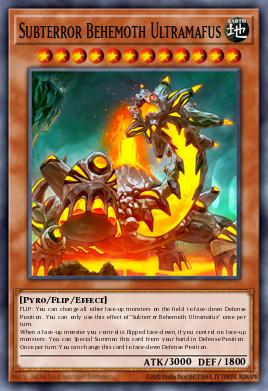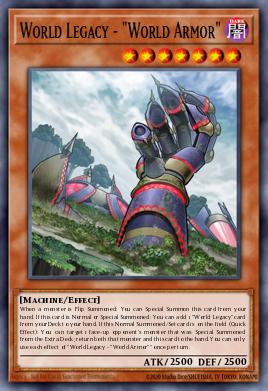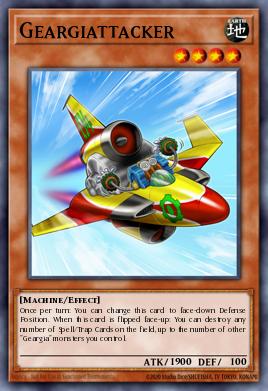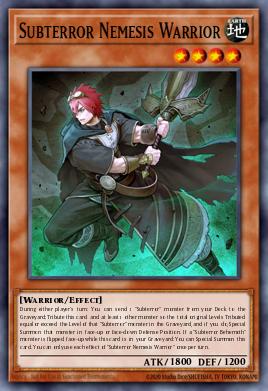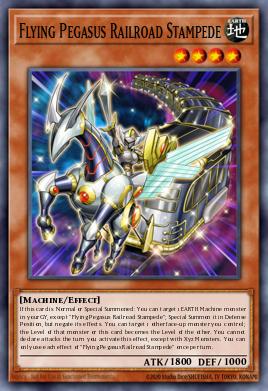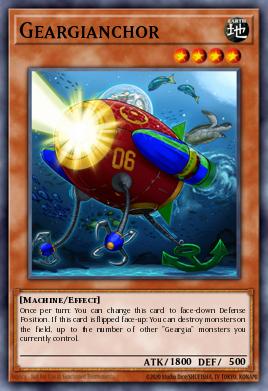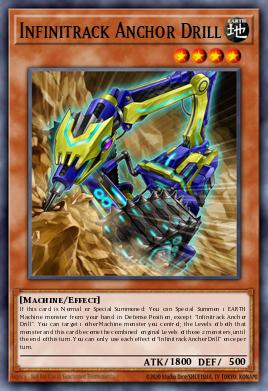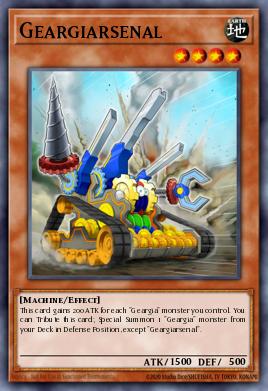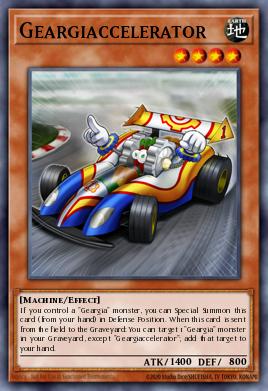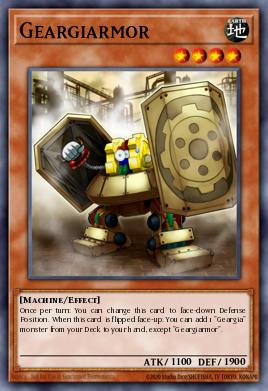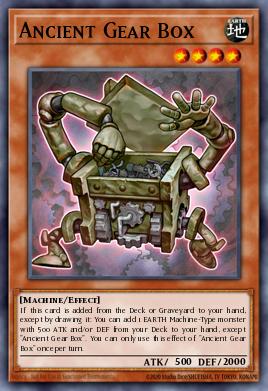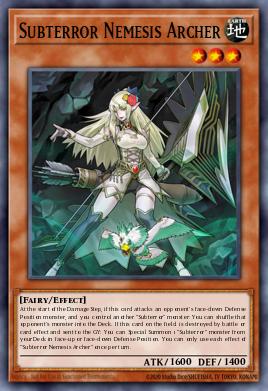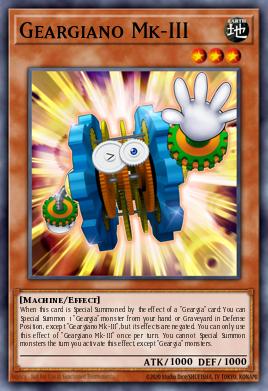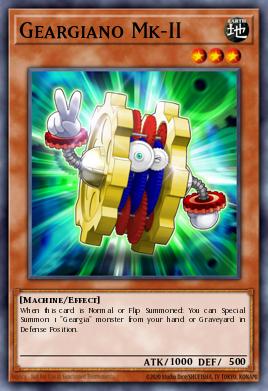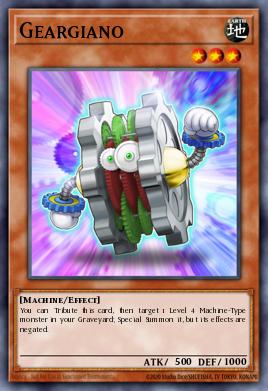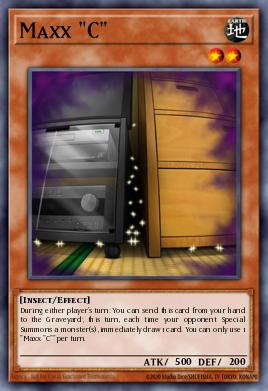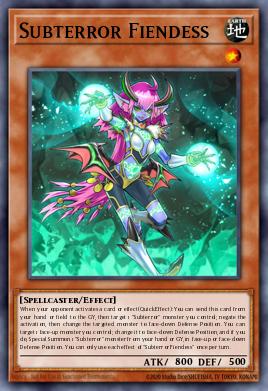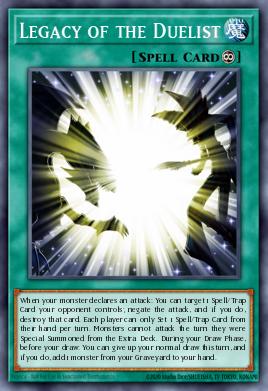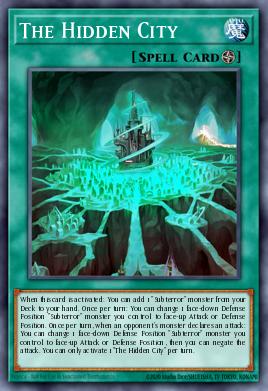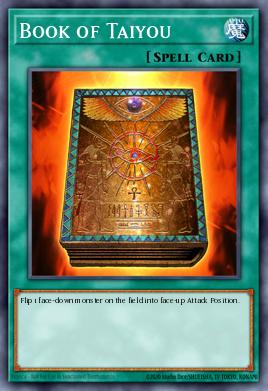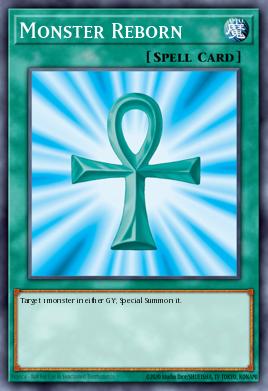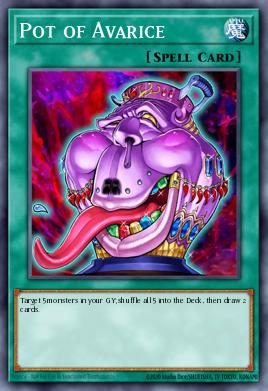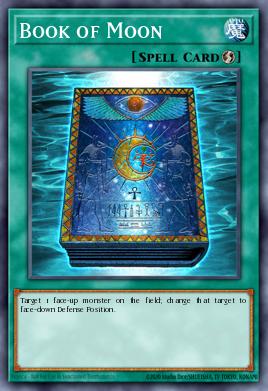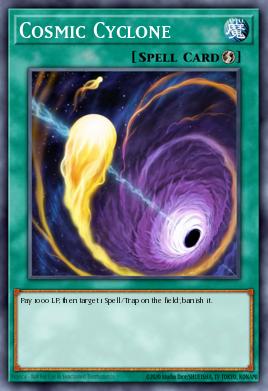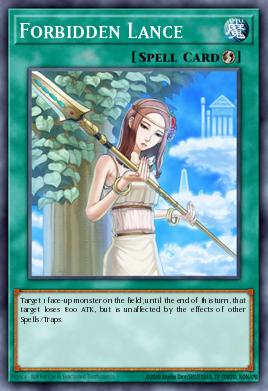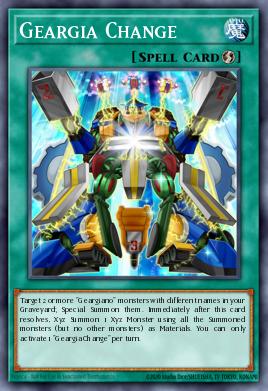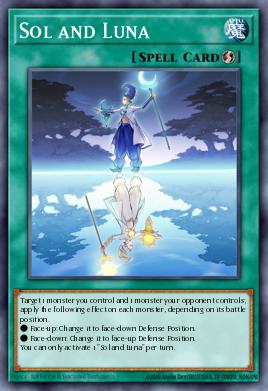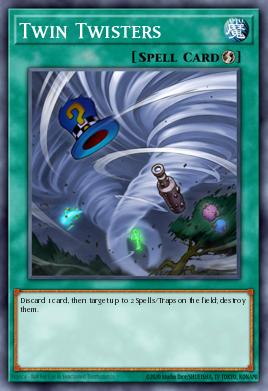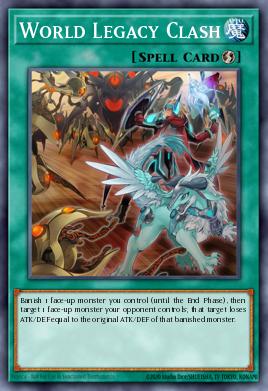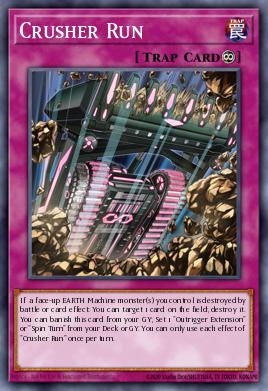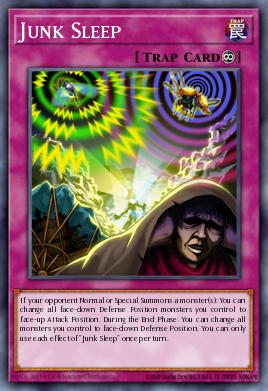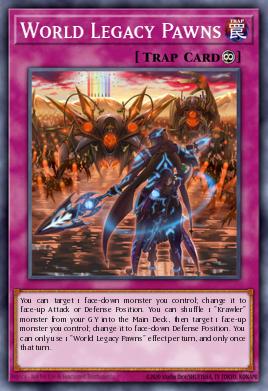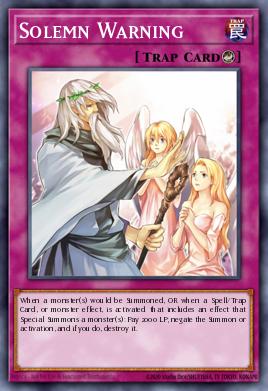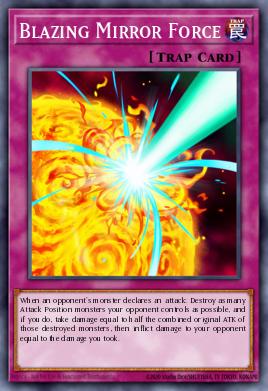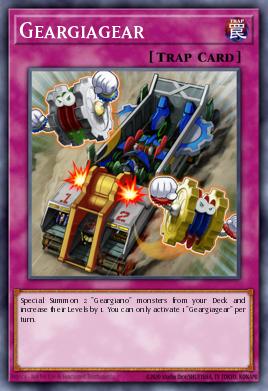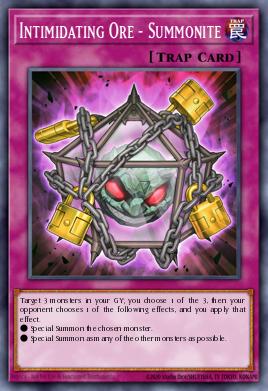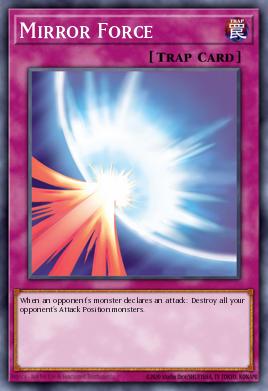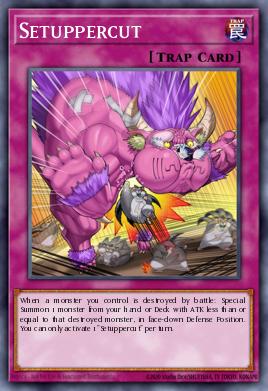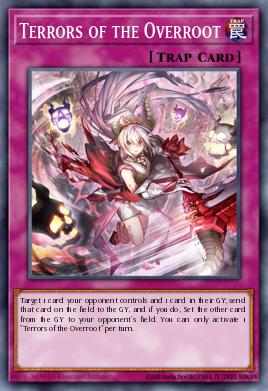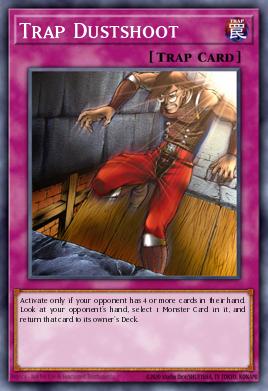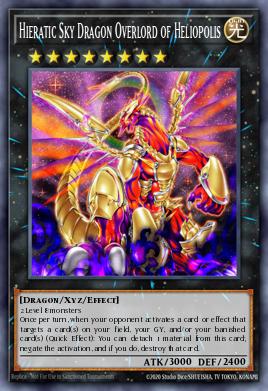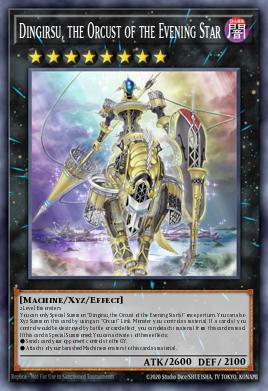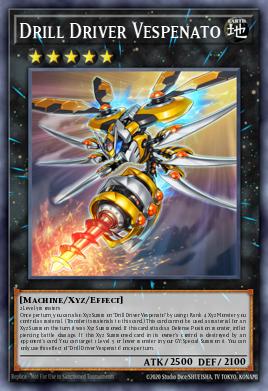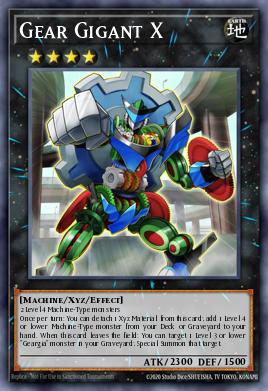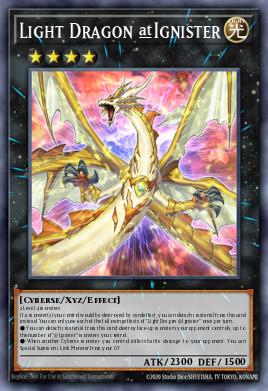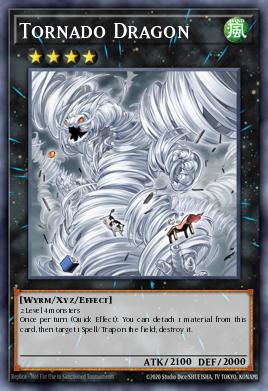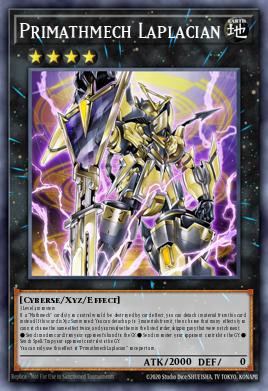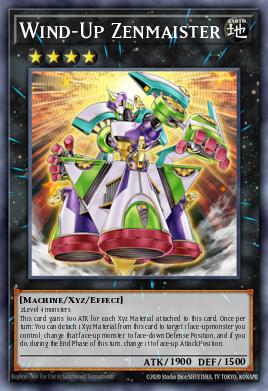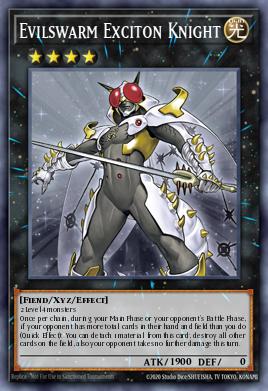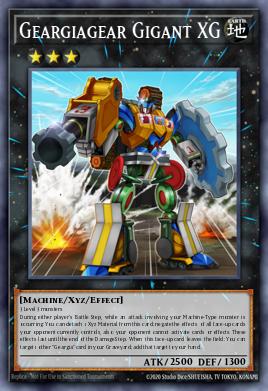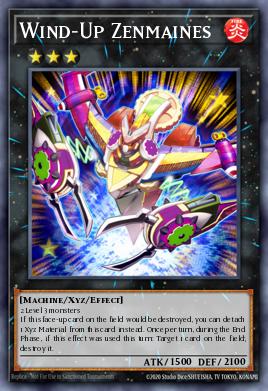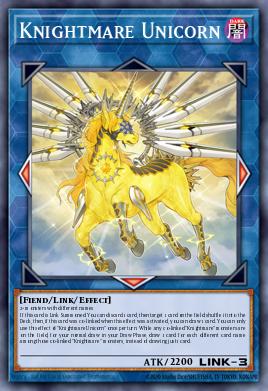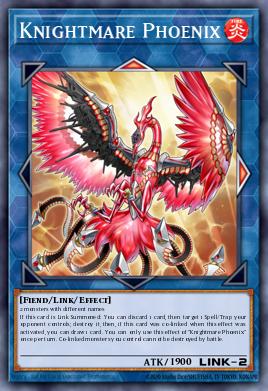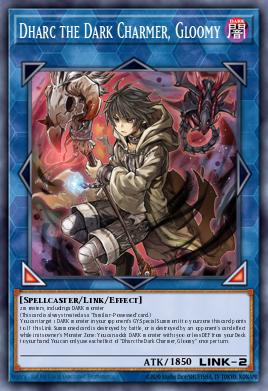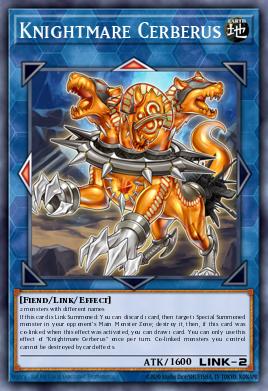Deckbuilding Theory: Co & Semi-Forbidden
Deck Primer
This article comes mostly from the perspective of research following Trinity format's recorded history between YouTube, Twitch, and its Discord archive; however, I will share my opinions along the way to give insight of my experiences as a player and general helper when it comes to last-minute deck edit recommendations for friends and opponents alike before the monthly YTC lists are finalized and pairs are put into bracket. Obviously this is catered more towards newer or unfamiliar members of the community; however, if you find something here for you whether that be knowledge or just plain entertainment then by all means you're more than welcome to have a read.
Full disclosure: Since I can't upload articles directly to this site, this is going up as a deck profile with the article attached. Anyone who has the capability of uploading articles for Trinity feel free to canabalize this piece and reupload at your leisure. I will unlist this in the event that transpires. Just remember to give credit. ^^
As stated in my other deck-building article, Trinity Format's take on being a psuedo-Highlander format invites a lot of creativity when it comes to deckbuilding concepts that can be borrowed from other highlander formats but explored much more heavily in its own right. Previously, we discussed probability and expected hands but today we're just going be taking a look at what is without a doubt the most volatile feature of the format: the banlist, or more specifically, the Semi and Co-Forbidden lists!
Since we'll be referencing this a bit, you can follow along with the official link here:
https://trinityygo.wixsite.com/trinityygo/forbidden-list
The jargon's had a pretty funny history when it comes to naming conventions but for the sake of consistency, I'll try my best to refer to things as their current names with One and Half Point categories taken into consideration over Semi and Co... or Proscribed...
How Does It Work?
What's the point of the points?
From what I can recall, the point system was initially designed with the idea that powerful cards could be played but more so as a drawback of just being unable to feature other powerful cards. This is because Pointed Cards cannot be played in multiples and additionally, since they share the Point System with duplicates, you are forgoing any one duplicate to access this list for that slot. It didn't actually inherently follow any sort of trends concerning diminishing returns nor reducing accessibility in one's own deck list. If anyone wanted to play these powerful cards, they could, at the cost of increasing their deck size and forgoing other options.
Fast forward a few events and the list runs into issues with a balancing act between determining if a card should be outright Forbidden or placed in the One Point category. I imagine this was out of a place of trying to keep things casually competitive in addition to making things less toxic to play against. This can be seen with cards like Painful Choice being moved from One Point to Forbidden and Monster Reborn moving from Half Point to One Point. Most changes back then primarily adjusted generics that were game-deciding at times since the format was slower back then; however, since this was the 2016-17 era of Yu-Gi-Oh!, there was a number of adjustments actually dedicated to archetypes and powerful monsters as well. This was done as a matter of gatekeeping in a literal sense to try and deter players from featuring repeat strategies and engines between decks and avoid homogenous designs. On paper, this was something that could be easily fixed with proper assessment and judgment; however, Trinity features an additional caveat when it comes to the Forbidden and Pointed Lists in the fact that the community's playerbase determines where cards will fall in those respective categories. There's a myriad of consequences with the system and has led to inane bloodshed but that won't be addressed here.
Looking at more modern Trinity banlists, we see that the trend of gatekeeping has fallen primarily on that of engines and sacky cards that are strictly considered to be faster and more game-deciding than cards of olde. This ranges from pure advantage generation with Nadir and Melffy Catty to format-warping 1ofs like Ice Dragon's Prison, Lightning Storm, and Titanocider. While this is fine in essence as it does liken itself to what has been represented in Trinity's historical banlists, there seems to be some disparity when it comes to determining the purposes of each category. We'll explore that in the next section which will be considerably more technical, so put on your thinking caps and follow along at your own pace.
All for One (Point)
The toughest call.
The One Point category from an outsider's perspective going by what I shared above should realistically consist of cards so powerful that they're worth forgoing 2 options from the Half Point Category and a duplicate of any Unlimited card in your list. Unfortunately, the reality of that isn't quite what it would seem when looking at the current August 2023 list. It's rather difficult to actually see any of the Spell/Traps featured in topping lists so we'll take that as a hint to stay away from those when picking one for ourselves.
In current Trinity much like Modern YGO, the Extra Deck is one of the most reliable means of bridging and conversions, so when selecting an option from the One Point list in a deck that makes use of the Extra Deck or can reasonably access it when necessary to close the game out and/or justify the usage of a card from this category then this is probably the most applicable case to a handful of strategies. While there's still a siginificantly large number of cards there that are archetypal, you can still at the very least feature cards like Number 41, Shenshen, and Chaos Angel. If your strategy allows you to access the other options like Qixing Longyuan, Toadally Awesome, and Heavymetalfoes Electrumite, then by all means pursue those at your leisure.
Looking at the Main Deck Monsters, these are featured primarily in strategies that cater to them anyway such as Joker in Pendulum, Madame Spider in 3-Axis or Trap Decks, and CED/Levianeer in Chaos strategies. It's not as easy to fit in most of these cards without running additional cards to compensate; however, since they themselves make up 1 card in the main deck, you have 4 card spots to work with to give yourself an easier time accessing them. For example, with Dark Spirit of Malice you can run a Fiend Package and with Alpha, the Master of Beasts, you can feature a Melffy Package.
Though we wrote off the Spell/Traps earlier, let's at least give them an assessment. It goes without saying that unless you can search any of these cards or are on a low enough deck count to reliably see any of these cards, they generally aren't worth running as they cannot be reliably seen enough to justify their inclusion. This makes cards like Gigantic Thundercross and Raigeki feel like traps to select and in my honest opinion, they definitely are. The Pots are generally a point of contention and while I think they're also traps that's more so due to the nature of the Half Point category rather than any inherent issue with the cards themselves. Much of the Spell/Traps featured here just run into the issue of consistency and there being better options available at cheaper tiers.
All of this taken into consideration it paints a pretty clear picture that the One Point category's current purpose at the time of writing this, is to primarily deter people from featuring specific cards found here like Pot of Greed; however, some are fun and bad enough to be legal for play and not affect much when taking into account variance while others are just outright too good to be allowed to be lower and are thus functionally banned here. I honestly wouldn't pay too much attention to this category with the current state that it's in. It lacks any real identity and is more of just a placeholder for things the community isn't sure what to do with. If you're considering running something from here for longer than two minutes then just slot in a duplicate or pair of Half Point cards instead.
Half a Point, Double the Power
The only real consideration.
I'm sure if you've looked at any of the topping lists, starter decks (even those not created by me), or banlist adjustments, you'll find that a lot of cards from there are just featured here. This category more so defines Trinity in practice than its intended relationship with One Point and the like would have you believe but why is that? Well, from a game design perspective, in order to even attain a point to spend, you must feature 5 cards over 30 in your main deck (put a pin in this for later).The majority of the time this will already be made up of 2 of the cards you select from here, so you only need 3 filler cards in reality. By default without taking into consideration searches or means of deck thinning, you already have double the odds of seeing either of these cards randomly in a hand over a One Point main deck option. This makes generic, unsearchable Spell/Traps that can spell game-over for the opponent highly favored when compared to their One Point counterparts. But then why do we elect to play these over a Duplicate generic Spell/Trap? Well, that's honestly something that could be explored; however, I believe the answer solely lies in the traditional intended answer of the Pointed category- the cards are also quite powerful on their own! Getting two for the price of one is really high value and undermines any real reason on doing otherwise with a generic Spell/Trap.
Looking at the generic Main Monsters here, you'll find Eater of Millions and Fleur. These cards are great on their own and serve as great representations of the traditional purpose of this category. Unfortunately, there isn't much incentive to play them, unless your deck already synergizes with them. Why? Well, that's entirely due to the fact that the other Main Deck Monsters featured here have potent support that allows them to be accessed pretty easily and not only fill up the 3 (or 4 if running an Extra Deck Half Point card), filler slots; this is seen in Arlekino, Meluseek, Sun Mou, Druiswurm, Myrmeleo, and Iris and due to the nature of this you can often find yourself building up towards another Point just because the packages are so big, unintrusive and deck thin by themselves.
The Archetypal Spell/Traps are definitely the ones who take the most advantage of this (especially in modern lists) as they can be accessed nearly as easily by their respective searchers while sometimes doubling as a form of interaction in some way. This can result in certain strategies that would otherwise have this as a weakness be an unexpected smokescreen of a boon and is used quite a lot even subconsciously by veterans of the game.
Lastly we have the Extra Deck Monsters who have all of the benefits mentioned in the One Point category with the only downside being that they're also tied to the Point System. That said, if you can play two of them then you're already in a better spot and being more effecient with your point spending than you would've been running anything from the One Point category. If you can only run one option from here, then you're free to take a Half Point card supported by an engine or a generic Spell/Trap. Both options are viable, proven, and have seen success.
I'm not entirely sure what the purpose of the Half Point category is meant to be from a game design perspective. Currently speaking, cards here may be featured to prevent duplicates like with Memory; or they're here to gatekeep them from being Unlimited at the very least in an attempt to deter their usage like with Durendal; or perhaps they're just here because of salty players not understanding how to deal with something so they just vote to place it here instead. There isn't really anything consistent to go off of and while it's of no detriment to you as a duelist, it does make this pool the most volatile for these reasons. Select cards from this category without the expectation of being able to use them for the same cost (either because they were moved to One Point, Forbidden, or even Unlimited) by the next banlist adjustment.
Putting it into Practice
Time to go shopping!
With a brief overview of the historical purpose and current purpose an optimal usages in mind, you should at least have a general understanding of how to actually take advantage of the Point System in meaningful ways when deckbuilding. The main judgment call you'll be making is whether or not (after assesing if you're even at the correct deck size anyway) a pair of Half Pointed cards are worth running over a duplicate Unlimited card. If not, then glance over the One Point list as a last resort (unless you're at a 40 or lower card deck or can reliably see said card).
While these cards are "limited" in a sense, you can still build around them to a degree, much like how you can in the TCG with restricted cards there as well. Starting with them as a building block can be good for generating fresh ideas if you're stuck in a rut or simply wanting to be innovative with designing a strategy by combining a myriad of things together. The sky is the limit when it comes to modern card design and interactions and if your fundamentals are just right, you can even pull off some incredible things such as winning a YTC with "Pot Tribal," where Wtrain stated that "If all the cards in the deck are good, then I will draw no bad cards." Which does lean into the idea of designing a great Good Stuff deck quite a bit and taking full advatange of the Point System and lacktheof with regards to some Unlimited cards, however, the notion still stands to good reason!
Not every strategy will feature the same number of points and even two similar strategies can be played with different Point Totals even focused on different areas. What ultimately matters is your preference, comfort, and mastery over the deck you're piloting as unfamiliarity will often have you losing games more so than pure card quality when on equal footing.
Another topic down with regards to what makes Trinity different. Hopefully if you're a newer player or spectator and have seen some of the format's crazy decklists, you can now understand it a bit better and see for yourself why certain cards are featured more or less than others from the Pointed Lists. This wasn't meant to serve as a critque of the community-run banlist, but address things from an effeciency and honest perspective as communicating what things are very clearly traps and suboptimal to newer players should be paramount to them actually having an easier time getting into the format. The One Point category's in a rough spot, but that's only for now. There's still some cards there that are worthwhile in featuring so if that's anything to go off of then there's hope that eventually its purpose will properly be assessed and reevaluated so that it's actually worth discussing when compared to Unlimited and Half Point counterparts.
Thanks for reading!
enjoy the random deck profile
Other Decks on ygoprodeck.com
 Cool
0
Cool
0
 Funny
0
Funny
0
 Angry
0
Angry
0
 Sad
0
Sad
0
Comments
Test Hand
Opening Hand
Delete Deck
Master Duel Cost Breakdown
Export Deck
Export to Image
Export to List
Export to Tabletop Simulator
Export Deck to Master Duel/Neuron
You can export your deck directly from YGOPRODeck to Yu-Gi-Oh! Master Duel or Neuron using our Web Browser extension!
Simply install the extension, and click the button below to export your deck to Master Duel or Neuron! It will bring you to the Official Konami Database. Once there, you can edit a deck and hit the "Import clipboard and save" button!
Price Deck from
Total Estimated Deck Price:
This tool attempts to find the lowest Market Price for each card on .
| Card | Qty | Price ea | Card Set |
|---|
Prices not found for the following cards:
Download Deck images
This will download all images used in this deck and zip them up for you. This is done on your computer and could take a minute or so to complete so please do not close the page.
